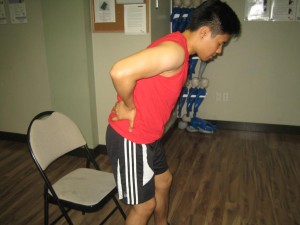Cycling is a widely enjoyed sport that all age groups can enjoy, but there are certain risks involved that you should be familiar with. The constant movement in cycling can lead to various forms of overuse injuries or strains including hip bursitis. If an individual is suspected with the condition, it is vital to consult a doctor for proper assessment and treatment of the condition.
Bursitis develops once a bursa is inflamed. The bursa is a small-size sac filled with fluid that serves as a cushion between the soft tissues and bones. The bony point on the hip is called as the greater trochanter and the bursa is positioned over the bone.
Once the bursa is inflamed, it can lead to trochanteric bursitis. There is another bursa on the interior of the hip that triggers pain in the groin area once it is inflamed. The indications of hip bursitis usually include pain in the hip and can get worse with extended exercise or walking.
Is cycling a possible cause?

Hip bursitis can occur from overuse particularly with repetitive movements utilized in cycling or running. The condition usually affects cyclists due to the recurrent sliding of the fascia lata over the greater trochanter.
Riding a bike that does not properly fit can also cause the body to work harder which places more stress and increases the risk for overuse injuries.
Management of hip bursitis
Once an individual has been diagnosed after examination, the treatment for hip bursitis usually involves avoidance of cycling until the body has fully healed. In most cases, it also includes anti-inflammatory medications, application of ice or corticosteroid injections into the bursa. In addition, avoid activities that will exacerbate the injury during this period.
When to resume cycling
If the individual decides to return to cycling too early before the hip is given time to heal, he/she is at risk for another injury or worsen the current injury that can lead to permanent damage.
The doctor will recommend the suitable exercises and determine when it is safe to resume cycling again. Once the individual resumes cycling, there might be a need to adjust the seat to a lower position. Do not forget to warm up thoroughly before a ride and stretch the hip and upper thigh muscles to minimize the risk for developing hip bursitis.
